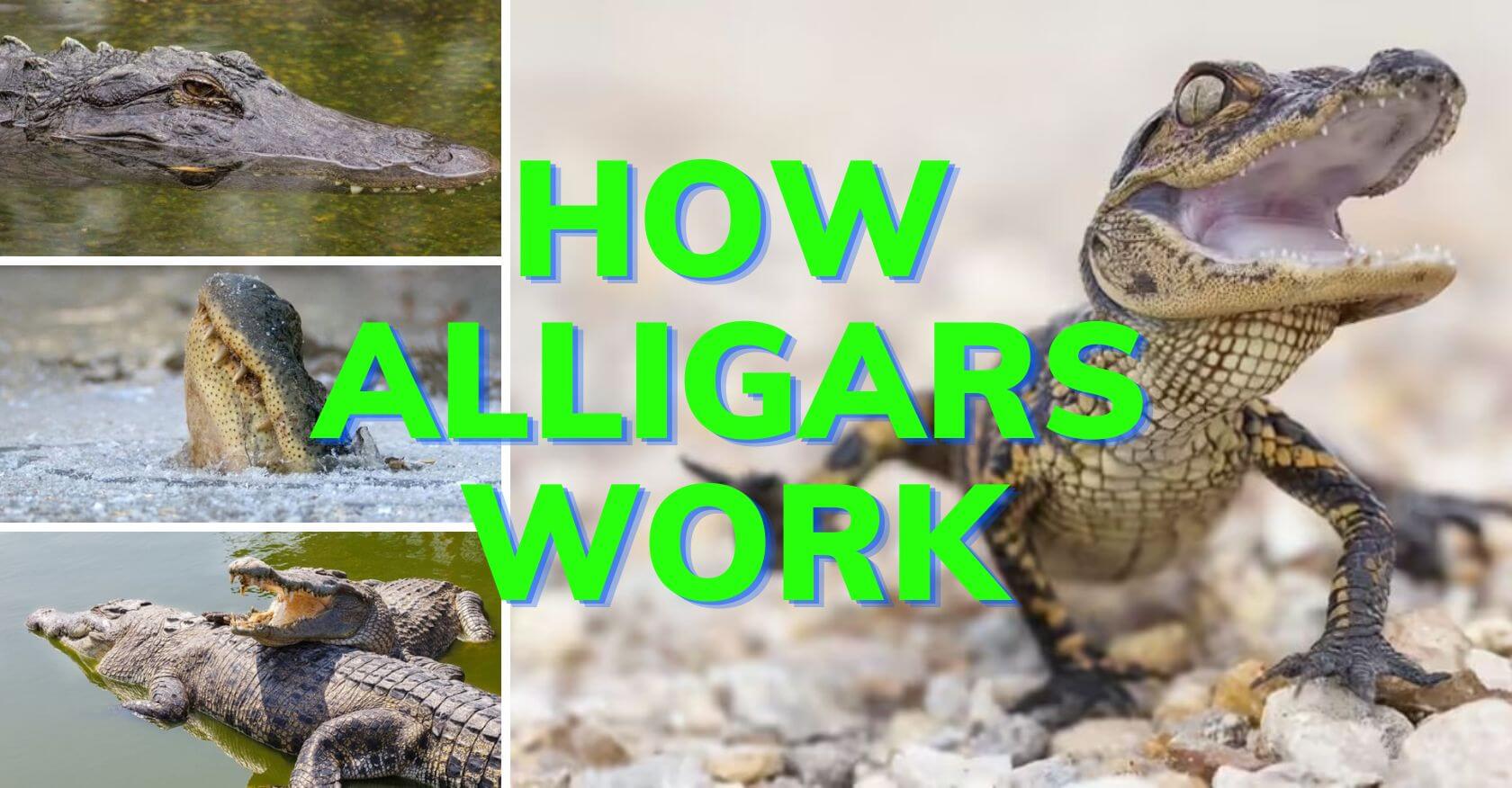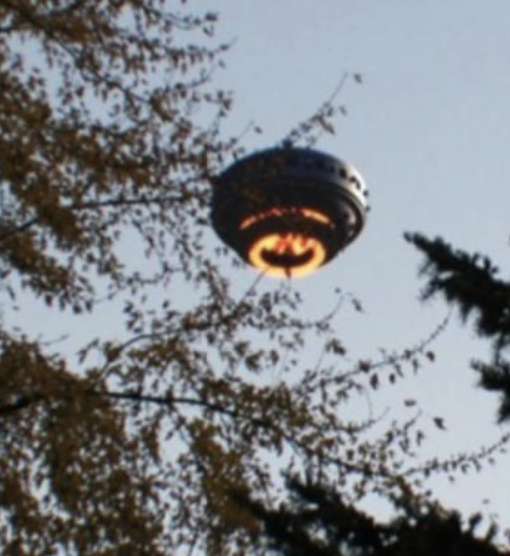Alligators have been around on this planet for a whole lot longer than humans have!

Alligators are absolutely amazing animals. They have been around for millions of years and are about as close as humans will ever get to seeing a living dinosaur. So how and why have they survived so long? They are nearly perfect animals for their environment, including U.S. states like Florida, Georgia, Alabama and Louisiana.
But wait! There's more ...
- Alligators can survive two to three years without eating.
- Alligators are one of the few reptiles today that care for their young.
- Alligators have vibration sensors on their skin that are extremely sensitive -- they can detect even the slightest vibration and get out of harm's way long before it arrives.
On the other hand, alligators can be quite dangerous. They are instinctual living machines. An alligator's brain weighs only 8 or 9 grams and would take up only one-half of a tablespoon. This lack of brain power means there is no such thing as a "nice alligator." If it's hungry, an alligator will eat anything that moves. Pets and children who wander near an alligator pond are frequent victims of this instinctive behavior.
American Alligators

Alligators have numerous special features that have allowed them to stick around for 180 million years.
For example, alligators are armor-plated. Bony plates inside the skin, called osteoderms or scutes, make the skin very hard to penetrate. When you look at the ridges on the back of an alligator, each little spike is made by a piece of bone in that section of skin. Click here to see a photo of typical osteoderms.
Even though alligators are huge and cold-blooded, they can be quite fast, with a top speed of 11 MPH (17 KPH) over short distances. For comparison, the fastest humans running at world-record times in a 100 meter dash, are running about 20 MPH (32 KPH), but a typical adult human is no faster than an alligator. This makes it possible for an alligator to escape from most situations on land and get into the water.
Alligator eyes have two sets of eyelids. The outer lids are like human eyelids. They are made of skin and close top-to-bottom. The inner lids are clear and close back-to-front. While an alligator is sitting about or swimming, these inner eyelids protect the alligator's eyes and provide clearer vision in the underwater environment.
When swimming underwater, alligators are water tight. Flaps close off the ears and nostrils, the inner eyelids protect the eyes and a special flap called the palatal valve closes at the back of the throat to keep water out of the throat, stomach and lungs. Alligators can stay underwater for quite a while. A typical dive might last 10 to 20 minutes. In a pinch, an alligator can stay underwater for two hours if it is at rest. And, in very cold water, an alligator can last up to eight hours submerged.
Alligator Features
Alligators have numerous special features that have allowed them to stick around for 180 million years.
For example, alligators are armor-plated. Bony plates inside the skin, called osteoderms or scutes, make the skin very hard to penetrate. When you look at the ridges on the back of an alligator, each little spike is made by a piece of bone in that section of skin. Click here to see a photo of typical osteoderms.
Even though alligators are huge and cold-blooded, they can be quite fast, with a top speed of 11 MPH (17 KPH) over short distances. For comparison, the fastest humans running at world-record times in a 100 meter dash, are running about 20 MPH (32 KPH), but a typical adult human is no faster than an alligator. This makes it possible for an alligator to escape from most situations on land and get into the water.
Alligator eyes have two sets of eyelids. The outer lids are like human eyelids. They are made of skin and close top-to-bottom. The inner lids are clear and close back-to-front. While an alligator is sitting about or swimming, these inner eyelids protect the alligator's eyes and provide clearer vision in the underwater environment.
When swimming underwater, alligators are water tight. Flaps close off the ears and nostrils, the inner eyelids protect the eyes and a special flap called the palatal valve closes at the back of the throat to keep water out of the throat, stomach and lungs. Alligators can stay underwater for quite a while. A typical dive might last 10 to 20 minutes. In a pinch, an alligator can stay underwater for two hours if it is at rest. And, in very cold water, an alligator can last up to eight hours submerged.
Exhausting an Alligator
Since alligators are cold-blooded, they have very small lungs compared to mammals. This means that, when running, fighting or wrestling, alligators are using anaerobic respiration (without oxygen) to power their muscles. Mammals, by contrast, use aerobic respiration for most activities like walking or jogging. The only time humans use anaerobic respiration is when doing things like sprinting or lifting weights, which require energy to be produced faster than oxygen is available.
A large alligator can exert itself for at the very most 30 minutes or so before it is completely exhausted. Then it will take several hours for it to recover. This means that one way to capture an alligator is to chase it until it collapses.
The Alligator Diet

When it is time to eat, alligators are neither hunters nor gatherers. They are lurkers. They wait for something edible to swim or walk nearby and they lunge at it with incredible speed. Using their tails, alligators can push themselves up to 5 feet out of the water to snag small animals in low-hanging tree branches.
Alligators will eat almost anything they can capture -- fish, turtles, frogs, birds, small mammals, and sometimes even larger mammals like deer. Alligators capture all of these creatures by lurking in the water.
When lurking, only the eyes and nostrils are above the waterline. If it is lurking in the shadows at a pond's edge, this posture can make an alligator impossible to detect. An alligator can sit like this for hours waiting for something edible to wander nearby. When its prey gets close enough, the alligator moves with startling speed.
Besides its eyes and ears, alligators are equipped with skin sensors that are incredibly sensitive to vibration. These sensors make it possible for an alligator to detect anything entering the water or disturbing the surface of the water anywhere nearby.
Once an alligator captures something, it will hold it in its mouth and drag it underwater to drown it. It must then get back above water to swallow it -- otherwise, the alligator's stomach and lungs would fill with water. Using its incredibly powerful jaws (which are able to exert up to 2,000 PSI), an alligator will break bones or crush shells (in the case of turtles) to create a chunk of flesh that can fit down its throat. Then it will raise its head, open the palatal valve and swallow the piece whole. An alligator can digest anything it swallows -- muscle, bone, cartilage, etc. are all digested completely.
Alligators, being cold-blooded, do not have to eat very often. Once a week is a typical feeding schedule for alligators living in the wild. Excess calories are stored in fat deposits at the base of the alligator's tail. Incredibly, by burning fat reserves, it is possible for an alligator to last more than two years between feedings.
Alligator Breeding
Alligators were nearly hunted to extinction in the 1950s and 1960s. Once they were protected from hunting, however, they were able to recover quickly because of their unique breeding behaviors.
Alligators breed in the spring. The female then builds a nest of mud and vegetation that is about three feet (1 meter) high and 6 feet (2 meters) in diameter. She lays 30 to 50 eggs and buries them in the rotting vegetation. The eggs are white, hard and slightly bigger than a large chicken egg.
The nest provides heat -- it is like a big compost pile and heats up naturally because of the decomposing vegetation. The alligator eggs respond to the temperature. If the temperature is in the low 80s F, the hatchlings will be female. If the temperature is in the low 90s F, they are male. For temperatures in between, the resulting hatchlings are mixture of males and females.
The mother protects the nest from predators, such as racoons, while the eggs are incubating. When the eggs hatch about 40 days later, the hatchlings make a noise and the mother digs them out of the nest. The hatchlings and mother will stay near the nest, and the mother will protect the hatchlings if they get into trouble and cry out. This protective behavior is very rare in modern reptiles, but it is thought to be common in certain dinosaur species.
Alligator Hibernation

When it gets cold in the winter, alligators slow down. Below 70 degrees F or so they stop feeding, and when it gets much colder, alligators dig out a den in the bank of a pond or river and go dormant until it warms up again.
Alligators can even survive freezing conditions. They have been known to rise to the surface if the water is about to freeze, with their nostrils above the surface. This allows them to breathe through the ice as it forms. In extreme cases, they get frozen into the surface of the pond for several days and then swim free when the ice melts. See this page for details.






